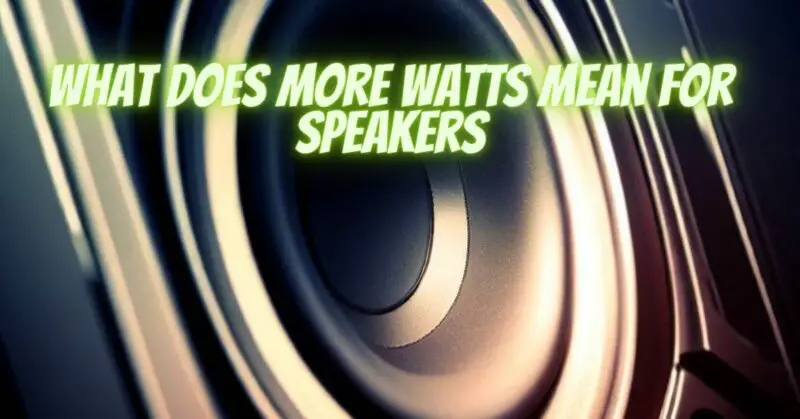The quest for powerful sound has driven the evolution of speaker technology, leading to the exploration of higher wattage capabilities. The allure of greater wattage lies in the promise of louder, more impactful audio experiences. However, the significance of higher wattage for speakers reaches beyond sheer volume. Let’s delve into the world of higher wattage and understand its implications for speaker performance and the auditory journey.
The Power of Wattage: Unraveling the Significance
Loudness Potential:
Higher wattage amplifiers can drive speakers to produce louder sound levels without distortion. This is particularly advantageous in larger venues, live performances, and scenarios where maximum projection is essential.
Dynamic Range:
A higher wattage capacity allows speakers to handle dynamic peaks in music or audio content more effectively. This ensures that sudden loud moments, such as drum hits or crescendos, are reproduced with accuracy and clarity.
Reduced Distortion:
Speakers pushed to their limits by low-wattage amplifiers might distort when trying to achieve higher volumes. With higher wattage, speakers can operate within their power handling capacity, minimizing distortion and delivering cleaner sound.
Low-Frequency Response:
Higher wattage amplifiers can better control low frequencies, resulting in improved bass response and tighter, more impactful bass tones.
Room Coverage:
In larger spaces, higher wattage amplifiers ensure that sound is evenly distributed, reaching every corner of the room. This is crucial for creating an immersive audio experience in venues like concert halls or auditoriums.
Overcoming Ambient Noise:
In environments with significant ambient noise, higher wattage speakers can cut through the noise and deliver clear, audible sound to the intended audience.
Future-Proofing:
Opting for speakers with higher wattage capacity provides flexibility for various scenarios. If you ever need to use your speakers in larger venues or settings, they’ll be better equipped to handle the demands.
The Caveats and Considerations:
Speaker Quality:
Higher wattage isn’t a guarantee of better sound quality. The overall build, driver quality, and engineering of the speaker play a significant role in how the increased power is translated into sonic performance.
Room Acoustics:
The acoustics of your listening space influence how sound travels and is perceived. In smaller spaces, excessively high wattage might result in overpowering audio or resonances.
Speaker Sensitivity:
Speakers with higher sensitivity can achieve similar volume levels with lower wattage amplifiers. Therefore, matching speaker sensitivity to your listening environment is crucial.
Balance and Harmony:
A balanced audio system considers factors beyond wattage, such as speaker design, amplifier quality, and room acoustics. A harmonious setup ensures that the increased wattage contributes to a holistic and enhanced listening experience.
The significance of higher wattage for speakers transcends simple volume amplification. It provides the means to deliver dynamic and impactful sound, maintain clarity at high volumes, and conquer challenging listening environments. However, higher wattage should be seen as a tool to enhance the overall audio experience, not as a standalone factor. The key is to balance wattage with speaker quality, sensitivity, room acoustics, and your specific audio goals. When harnessed effectively, higher wattage amplification can propel your auditory journey to new heights of power, clarity, and emotion.


